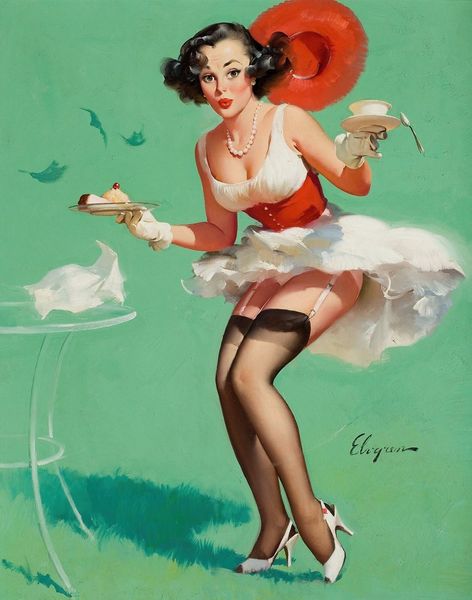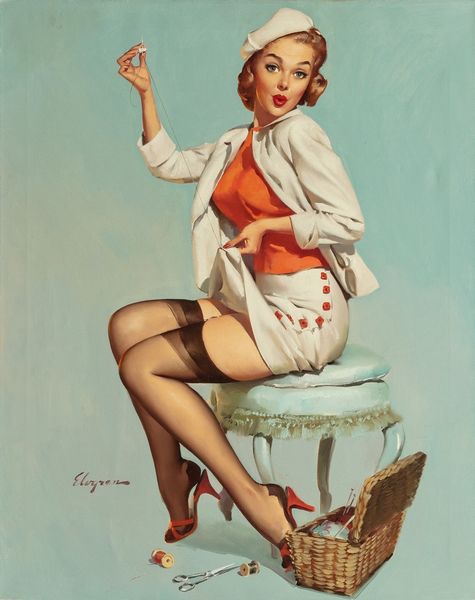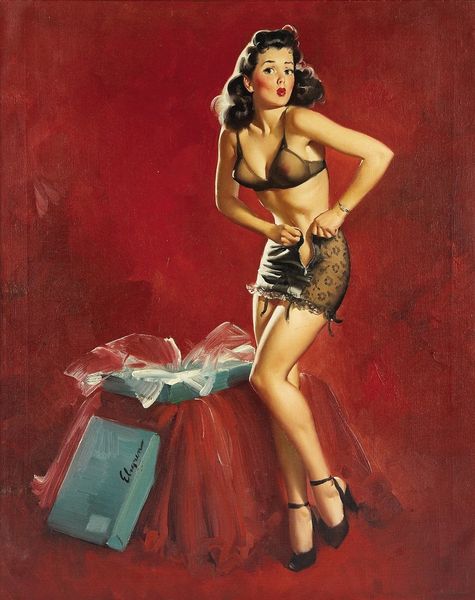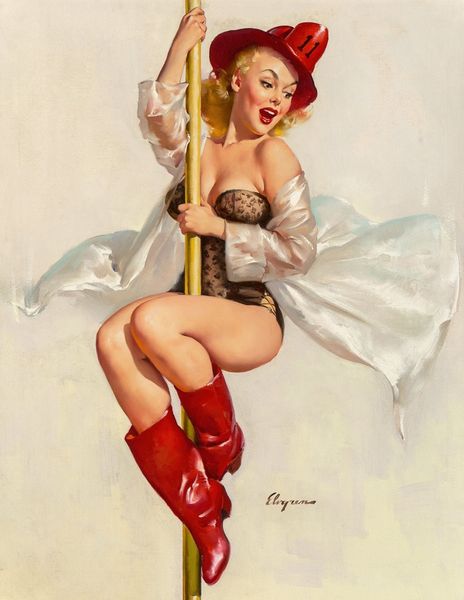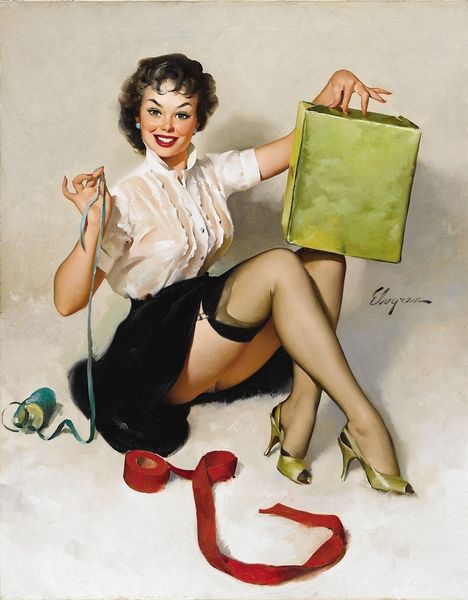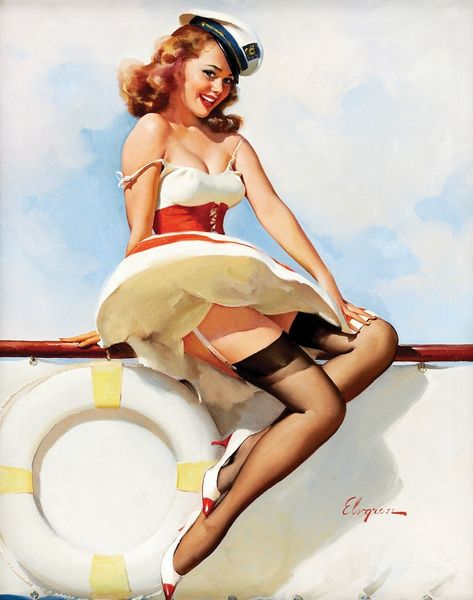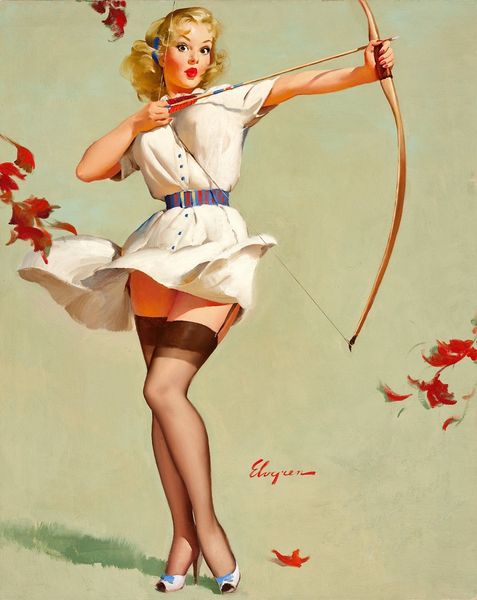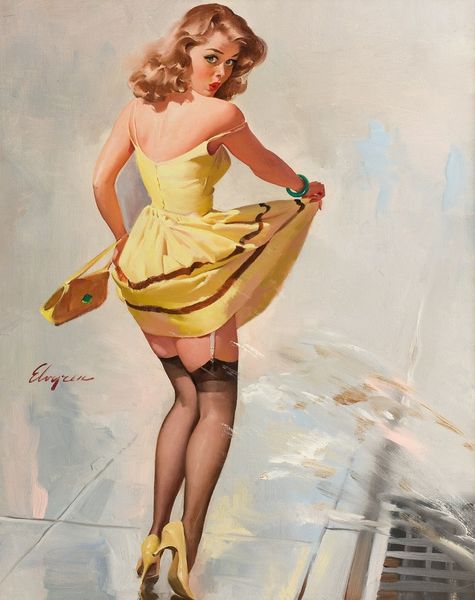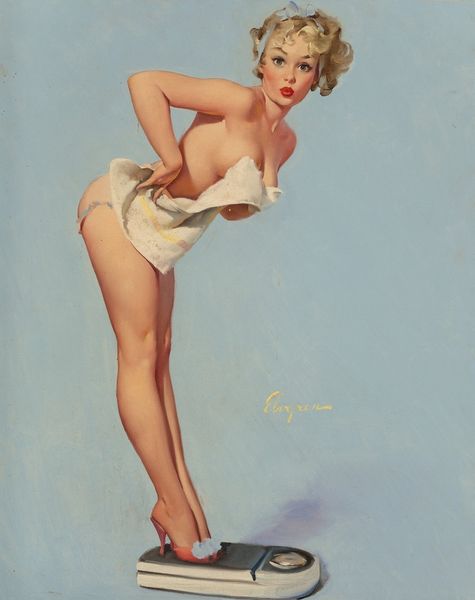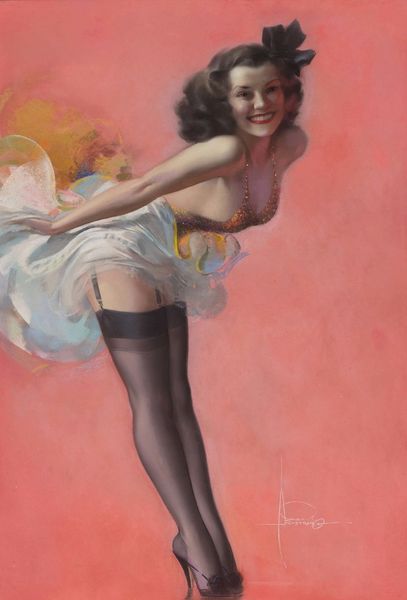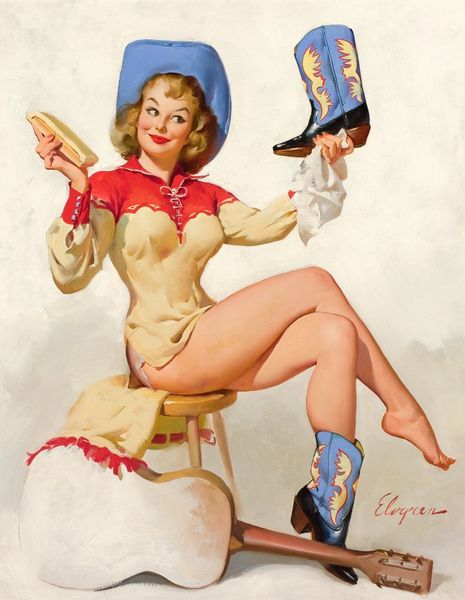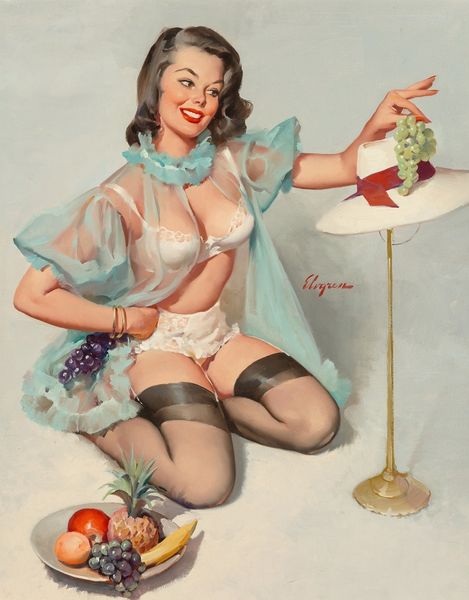
Copyright: Modern Artists: Artvee
Editor: This is "Aiming to Please," a 1960 oil painting by Gil Elvgren. The painting is very… playful. There's a sense of lightness to it. How would you interpret the visual components of this artwork? Curator: I observe the careful arrangement of shapes and forms; how Elvgren utilizes a dynamic composition that seems to hinge upon the woman’s arching form. The curve is mirrored in the lifted skirt and again, subtly, in the game pieces on the ground. The interplay of circular and linear elements adds visual interest, don't you agree? Editor: I do. I noticed that the red and white color scheme, quite vibrant, is echoed in multiple elements. I wonder, why draw our attention to that? Curator: It's primarily aesthetic. He’s playing with semiotics, you see, manipulating our associations with vibrancy and perhaps a certain feminine ideal of the era. Do you think the material handling -- the brushstrokes and layering of paint -- contribute to this? Editor: Absolutely. The smoothness and controlled application create a sense of idealized form, removing any roughness. Curator: Precisely! He directs our gaze and shapes our reading of this, all by a close consideration of its form. It speaks not of historical fact but rather the language of vision and pleasure. Editor: This really shines a new light on what was created in this piece through the careful formal choices. Curator: Indeed. Examining art's visual elements enriches our appreciation of what the art attempts to evoke.
Comments
No comments
Be the first to comment and join the conversation on the ultimate creative platform.
